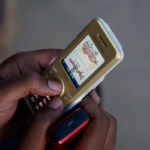In an earlier post, I discuss how financial exclusion forces the unbanked and people living in poverty to spend more money accessing financial services. Financial exclusion imposes higher costs and also limits a person’s ability to save, invest and access credit formally. In 2014, Jack and Suri suggested that a lack of formal investments and savings can often make a person rely on informal financial risk-sharing mechanisms when faced with financial crises. New research from Ahmed and Cowan (2021) [gated] looks at the effects of mobile money transfer technologies (MMTs) on the use of health care services during health shocks. By definition, health shocks are periods of sickness that cause someone to miss school or work. Ahmed and Cowan’s focus on the use of health care services is a deviation from the popular emphasis on how MMTs can influence financial inclusion in general or the ability of MMTs to lead to gender parity as seen in other studies.
In this post, I highlight insights on Ahmed and Cowan’s results of the unintended effect of MMTs on health care usage, household consumption and its complementary role among other financial risk-sharing mechanisms. I also share my thoughts on how the introduction of other variables like household income might provide additional insights into household utilization of MMTs in future studies.
The study’s methodology
Ahmed and Cowan use secondary data from a longitudinal socioeconomic survey conducted quarterly in Kisumu County, Kenya. The data span 2013 to 2016 and consist of 1,800 households in 10 villages. The authors selected these villages through simple random sampling from an original population of 30 villages in a much larger survey.
The authors control for household fixed effects. Put simply, fixed effects control for omitted variables bias, a scenario where important variables are missing in a model. Additionally, in this study, the authors specify that this control helps ascertain the effect of a change in status from either using or not using MMTs and vice versa. Finally, the authors use trend maps to show differences in average health care expenditures for both households that use MMTs and those that do not before, during and after health shocks.
Some useful descriptive statistics
The authors begin by presenting some useful descriptive statistics about the households in their sample. First, households that use MMTs are more likely to have positive cash savings (90%) during the survey period than households that do not use MMTs (14%). Second, more households that use MMTs (40%) take loans formally and informally during a health shock than households who do not use MMTs (1.3%). However, the authors point out that since they do not control for selection bias between households that use MMTs and those who do not, these numbers might also mean that households with positive cash savings are more likely to adopt MMTs. Finally, only 44% of people in the entire sample have positive savings cash flow. These numbers stood out to me because even though households that use MMTs fare better than those who do not, only 44% of people have positive savings during the survey period.
What do the results show?
Three interesting insights immediately caught my attention as I studied Ahmed and Cowan’s results.
Spending increases during health shocks regardless of whether a household uses MMTs or not.
Ahmed and Cowan find that health expenditures shot up 297% on average during health shocks for all households. They also find that health shocks do not affect non-health expenditures, which goes against a lot of prominent literature (like Jack and Suri, 2014) that finds health shocks shrink expenditures on non-health consumption. The authors’ intuition is that this difference might be explained by the time effect of the data collection timeframe. Recall that while the data used by Ahmed and Cowan for their analysis is collected at a three-month interval, other authors use data collected at a six-month interval. Longer intervals might mean that households forget to report those expenditures. Additionally, costs such as school fees might not reflect in short-term intervals as people may make annual or bi-annual payments.
Another relevant result the paper finds is households that use MMTs spend 98% more on average per capita on health care services during a health shock than households who do not use MMTs. When there is no shock, this figure is only 36%. Ahmed and Cowan also find households that use MMTs are 0.48 times more likely to use health facilities and 16% more likely to purchase medication than households who do not use MMTs. Additionally, the authors find households that adopt MMTs are 15% more likely to pay for doctors’ consultation than households without MMTs during health shocks. These statistics are interesting because households that use MMTs could spend more on health care expenditures without changes to non-health expenditures or savings. The authors raise a good explanation for this: the possibility of transfers from family and friends, possibly facilitated by MMTs. My perception is that these higher uptake rates by households that use MMTs could also be as a result of the fact that 90% of these households had positive cash savings.
MMTs complement other financial risk-sharing mechanisms.
While reading Ahmed and Cowan’s paper, I was curious about whether households that use MMTs still use other financial risk-sharing mechanisms. My curiosity was due to results by other popular studies, such as Jack and Suri’s paper, which find some shrinkage in non-health consumption during health shocks (perhaps because money was redirected to health expenditures). Ahmed and Cowan eased my thoughts with their analysis on the complementary versus substitutionary role of MMTs as a risk-sharing mechanism. Their result shows that poultry and crop sales increased during health shocks for households that use MMTs and those who do not. They also find no difference in the effect of gifts received among both household categories. However, the results for poultry and crop sales, and those for gifts received, are not statistically significant. The authors explain that these results might mean that additional transfers into households, facilitated by MMTs, act as complements to sales and in-kind gifts during health shocks. My thinking is that these findings could also suggest that other risk-sharing mechanisms were not sufficient to ease consumption costs for all families in the first place.
Some final thoughts on this research and future research on MMTs
Finally, although this study provides substantial lessons on MMTs, its models and diction are easy to follow. I believe that complex and rigorous readings presented in simplified forms – as this paper does – are essential to teaching different contexts and methodologies of development research and spurring conversations that make research better. This work makes me look forward to reading, learning and sharing more about research on financial inclusion.
Photo credit: Leo Patrizi/Getty Images



